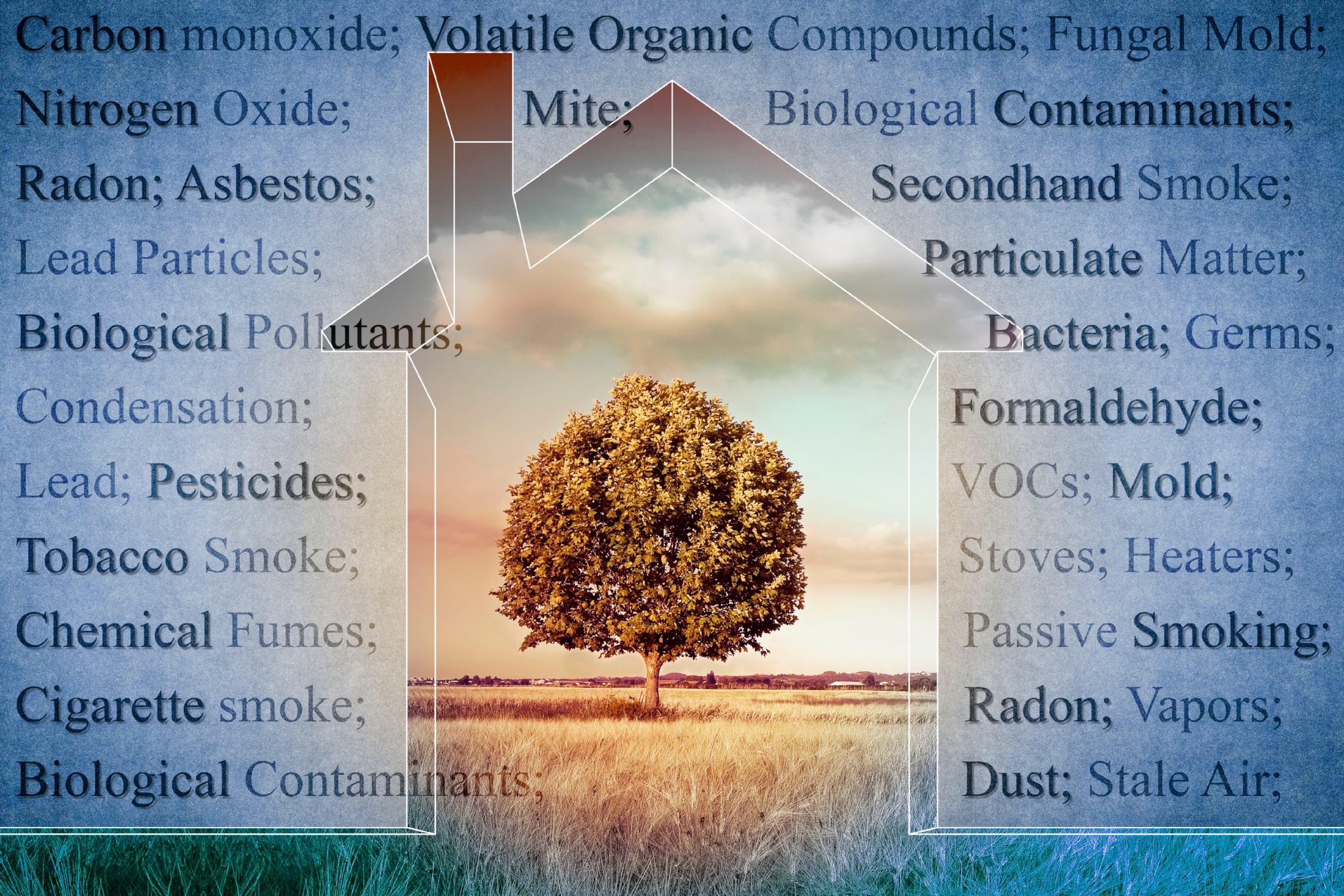
We’ve all heard of Sick Building Syndrome, or SBS, as it’s a well-documented health condition which can prevail in a variety of circumstances and environments. And hospitals are not immune to outbreaks of SBS, despite otherwise thinking that places like this would be free from such largely unseen threats. To many of us, hospitals are seen as a relative ‘safe haven’, given that they often accommodate individuals who are at significant vulnerability to contracting diseases which are airborne in nature. We’re talking about the elderly, very young and anyone with compromised immunity systems due to underlying health issues from which they suffer. And it’s not just those of us who find ourselves admitted to hospitals, or indeed, passing through outpatients who are susceptible to the subsequent ills caused by substandard air quality, as patients aside, the healthcare workers themselves are constantly exposed to all manner of contaminants.
Affording its broader, cover-all title, Sick Building Syndrome can take effect in hospitals with a frequency every bit as much harmful as when it strikes in offices, factories or any public service-offering building where people congregate. Classic symptoms to be vigilant for include headaches, dizziness, eye, nose and throat irritations, dry cough, itchy skin, nausea and a general air of discomfort. What’s more, continued exposure to air pollutants (both those found indoor and outdoor) has been clinically recognised as a contributory factor when considering the risk of heart disease, stroke and cancer.
So much so that the British Lung Foundation has described air pollution as a full-blown ‘public health crisis’, as the populace of towns and cities across the UK face up to the threat of increased air contamination and the very real health legacies associated with it; with the likes of respiratory conditions such as asthma acknowledged as being on the rise. The World Health Organisation has pinpointed central London as being particularly dangerous for public health for those who live and work there in a sustained capacity, culminating in Londoners’ mortality rates supporting a marked 20% increase over the rest of Britain as a result of inhaling noxious fumes, second-hand smoke and indoor mould and dampness too.
Which is why steps must be taken to ensure that the air we breathe inside buildings is of the optimum quality, so as to counter what we’re exposed to when we’re out and about. And therefore why emphasis must be placed on making indoor environments as pollutant-proof as is possible. Especially buildings which serve the healthcare sector, such as hospitals and care homes, where society’s most vulnerable tend to congregate for long passages of time.
How Does Exposure to Indoor Air Pollutants Impact on Public Health?
Significantly, is the answer to this question. Especially it taking into account the World Health Organisation’s global stats which make for grim reading. According to the official body on all things health, WHO research has concluded that a staggering 1.4 million people are suffering from the effects of a nosocomial or hospital-contracted infection at any one time. Which can, in turn, lead to in the region of 80,000 deaths annually.
Enveloping various factors, none of which are clinically conducive to good health, the indoor air quality can be determined (and subsequently impinged) by a number of unwelcome, predominantly airborne trace elements. These include fluctuating thermal (temperature and relative humidity) conditions, the presence of chemical components and contaminants, and/or poor outdoor air quality being introduced to the mix. Meanwhile location, other external sources, effectiveness of filter, occupation levels, type of use and even the fabric and décor used in building interiors can influence recorded indoor air quality.
What sort of pollutants can affect the indoor air quality in hospitals?
There are a range of airborne nasties typically found within the four walls of hospitals and health centres at any one time, and include (the familiar) carbon dioxide (CO2), carbon monoxide (CO), nitrogen dioxide (NO2), ozone (O3), formaldehyde (CH2O), total volatile organic compounds (TVOC), respirable suspended particulates (RSP), radon and total bacterial count. Elsewhere, and you can’t rule out the possibility that other serious chemical contaminants; with glutaraldehyde (C5H8O2), nitrous oxide (N2O) and latex allergens all cited. The majority of the time we’re talking about unseen micro-bacterial elements, which in pathogenic microbe form can be suspended in the air, enabling easy transmission to unsuspecting victims. Putting names to these pollutants, look no further than multidrug-resistant Mycobacterium tuberculosis (TB) bacteria, Legionella bacteria, methicillin-resistant Staphylococcus aureus and Aspergillus spores.
TB bacteria can spread when a patient coughs or sneezes, releasing airborne droplets into the immediate atmosphere, while Legionella bacteria can thrive in hospitals via water mist discharged from contaminated cooling towers. With regards to Staphylococcus aureus, this particular bacterium is present on the skin, and in the nose, blood and urine of an infected patient. When surgical implements such as oscillating bone saws and bone drills are used in procedures, microbial aerosols can be generated. In terms of the threat posed by Aspergillus spores, and this has more to do with when structural renovation is being carried out in and around hospital buildings; which can often be the source of aerosolized Aspergillus spores. These fungal spores (from soil, plants, animals, and dust particles) can then attach themselves to the clothing of healthcare workers or visitors.
And similar to the way in which Sick Building Syndrome (or Building-Related Illnesses (BRI) can manifest as a result of inhaling particles of noxious dust, subsequent health conditions clinically proven to have been caused by Sick Hospital Syndrome (SHS) – and distributed by the presence of any of the aforementioned - can range in severity; and include pneumonitis and certain forms of cancer. The pre-requisite, of course, for any hospital facility is to provide for (and ensure that) a good Indoor Air Quality (IAQ) strategy is in operation to safeguard patients, nursing staff and visitors from the hazards of occupational diseases, as well as from the risk of nosocomial or hospital-acquired infections (HAI).
So, the next, and arguably most important question is, what can we do to actively maintain indoor air quality in hospitals? Or to put it another way; what measures can be adopted to tackle substandard air quality in hospitals?
Understanding the need to make hospitals essentially ‘clean air zones’ so as to offer protection to everyone who visits, it’s imperative that the powers that be keep on top of maintenance of existing inbound air ventilation systems within properties which support this can be of an elaborate infrastructure. Whilst initial installation of these ventilation and air-conditioning assemblages is important, it’s thereafter – through sound management principles and operational procedures – which is fundamental to safeguard public health. And unsurprisingly both the operation and maintenance of HVAC systems in hospitals are more critical than other buildings. This is why NHS managers are asked to put into practice routine maintenance protocols which will enable buildings which offer care services to patients to promote these clean air zones at all times.
With this in mind, what remedial precautions can hospitals here in the UK take to maintain indoor air quality then?
One of the main counters to the underlying risks associated with unwelcome pollutants making their presence felt within the parameters of health care environs is the facilitation of active ionisation technology, or IAQ. Boasting what’s described as an ‘elevated antibacterial power’, active ionisation tech has an impressive track record when it comes to tackling an array of potentially harmful elements. Such as mould, fungus, smog, viruses, pollen, fine dust, bacteria and toner to cite just a few. Active ionisation air cleaners and filters are designed specifically to magnetise these contaminants, largely unobserved by the naked eye, and to neutralise their threat. This eradication has proven results in the area of nullification of numerous airborne bacteria, including Micrococcus luteus, yeast (such as Rhodotorula rubra), Bacillus Anthracis and a plethora of moulds and germs present in the natural spectrum of air.
Aside from IAQ, keeping tabs on humidity levels is also key to protecting the public from indoor air pollutants, with focus needed on heating, ventilation and air conditioning systems of buildings, in tandem with their core components. Together with sanitary assemblages, all these in-built examples can foster and diffuse airborne substances, not least Staphylococcus Aureus and Legionella. UV radiation is another weapon in the fight, which essentially disinfects rather than filter, and is traditionally applied to cooling coils, ductwork and insulation to eliminate fungal growth.







